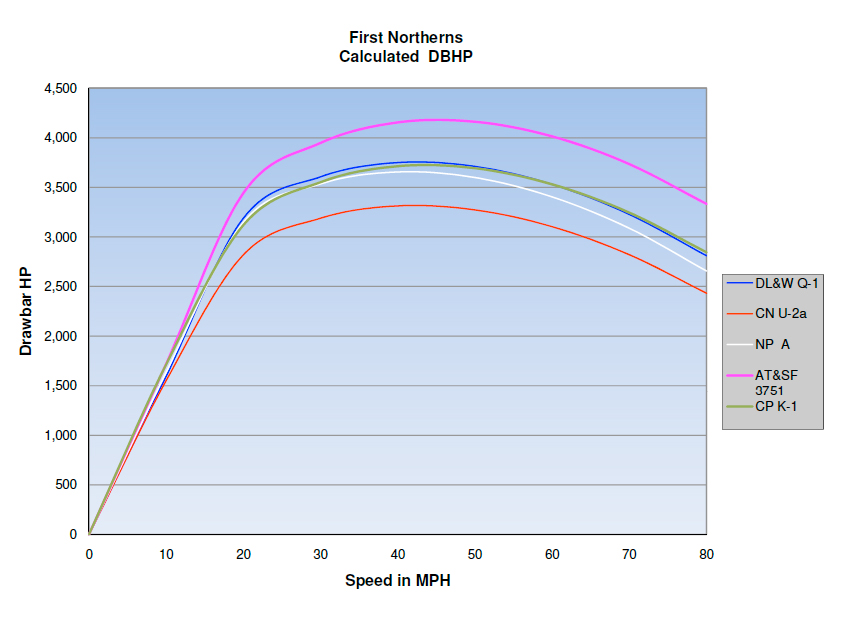From boiler specifications such as pressure, evaporative heating surface areas, superheat temperature, feed water heating equipment, etc., it is possible to estimate boiler horsepower. The boiler is the prime mover on a steam locomotive — as the diesel engine is with a diesel-electric locomotive — and boiler horsepower represents the maximum horsepower that the locomotive is capable of developing.
From the boiler horsepower we can estimate the drawbar horsepower at any speed. Drawbar horsepower (DBHP) is the horsepower developed by the locomotive at the tender coupler. It is important because this is what moves a train; it’s what pays the bills.
It takes energy to move a locomotive, and this energy — which can be significant — reduces the power available from the prime mover that may be used to power a train. So, in order to calculate DBHP, it is necessary to estimate this required energy. It includes losses due to the locomotive’s mechanical and rolling friction, and from windage, and these losses increase with speed. When boiler horsepower is reduced by the appropriate amount for these losses, the DBHP may be estimated for any speed.
The results produced by the Baldwin method were generally conservative. They were meant to be representative of what a locomotive could do on an average day, with decent fuel and a typical crew. As a consequence, many locomotives frequently bettered the results shown by these analyses. But, on the other side of the coin, some did worse. This was often because of steam-circuit issues where steam flow was constrained by narrow steam passages, or by the valves. The Baldwin method assumes that there were no issues with a locomotive’s steam circuit.
Dynamometer-car testing was another technique used by a few railroads to measure locomotive performance. This was done in real time and out on the road. A dynamometer car has an instrumented drawbar that, when coupled directly behind the locomotive, can measure the locomotive’s drawbar pull and speed. Most of the time, locomotive performance would be measured while pulling a typical train over normal operating terrain, and locomotives developed just enough horsepower to get the job done. Only occasionally were they forced to operate at maximum capacity. Consequently, unless determining maximum performance was a test objective, maximum horsepower curves were not obtained. So, for the majority of railroads, this left the Baldwin method as the simplest way to estimate locomotive performance over a wide range of speeds.
For anyone interested in pursuing this further, a good place to start would be reviewing chapters 10–12 of Ralph Johnson’s book The Steam Locomotive. Johnson was the chief engineer of the Baldwin Locomotive Works. The book is still in print.
The eight graphs show the calculated DBHP for selected 4-8-4s using the Baldwin method.















Yes, especially bridges, trestles and design criteria for tracks that shared space on streets.
Fascinating account of mechanical railroad engineering . Would like to see similar steam era civil engineering from discontinued infrastructure like older bridges , trestles and coaling towers .